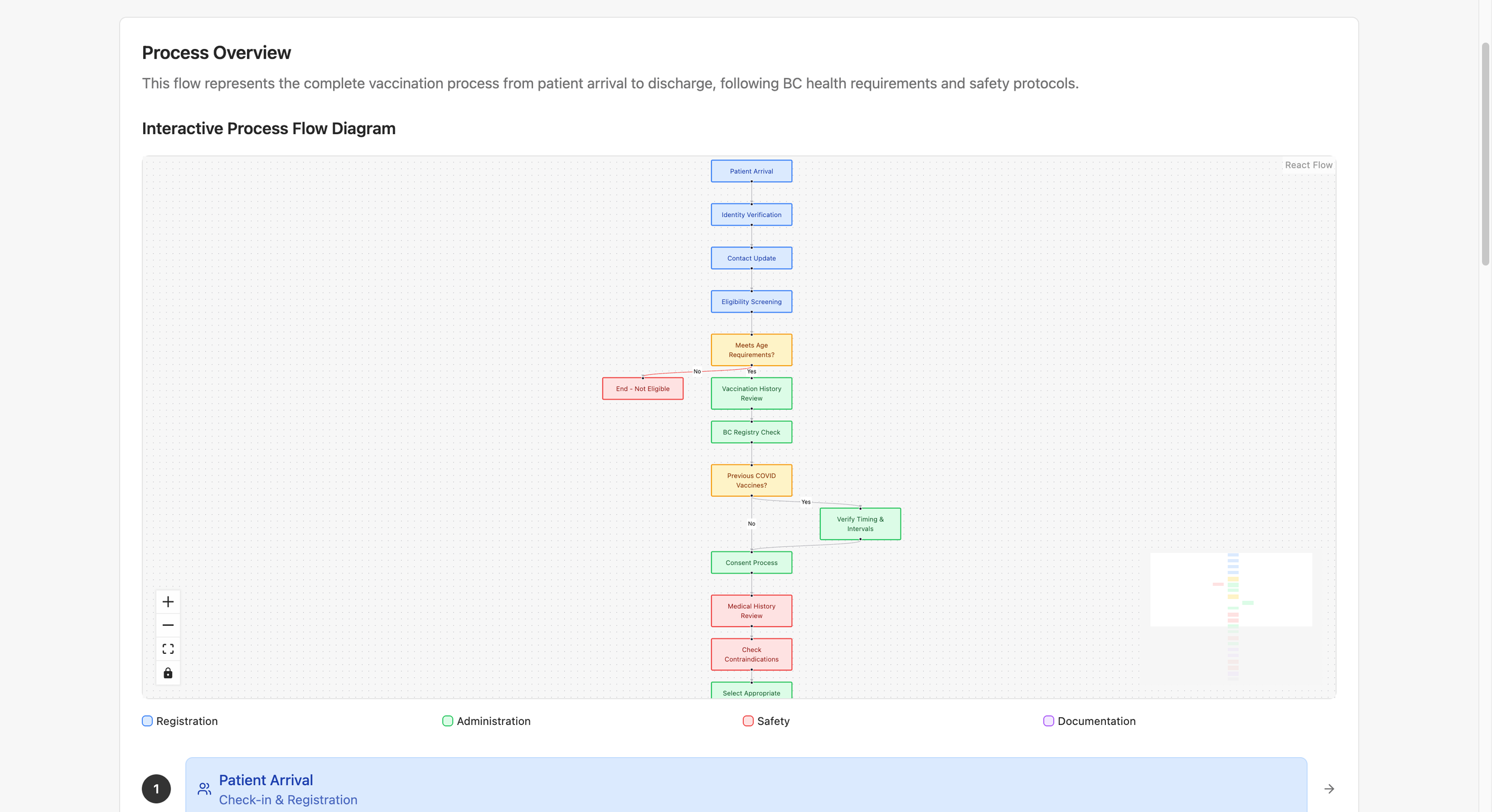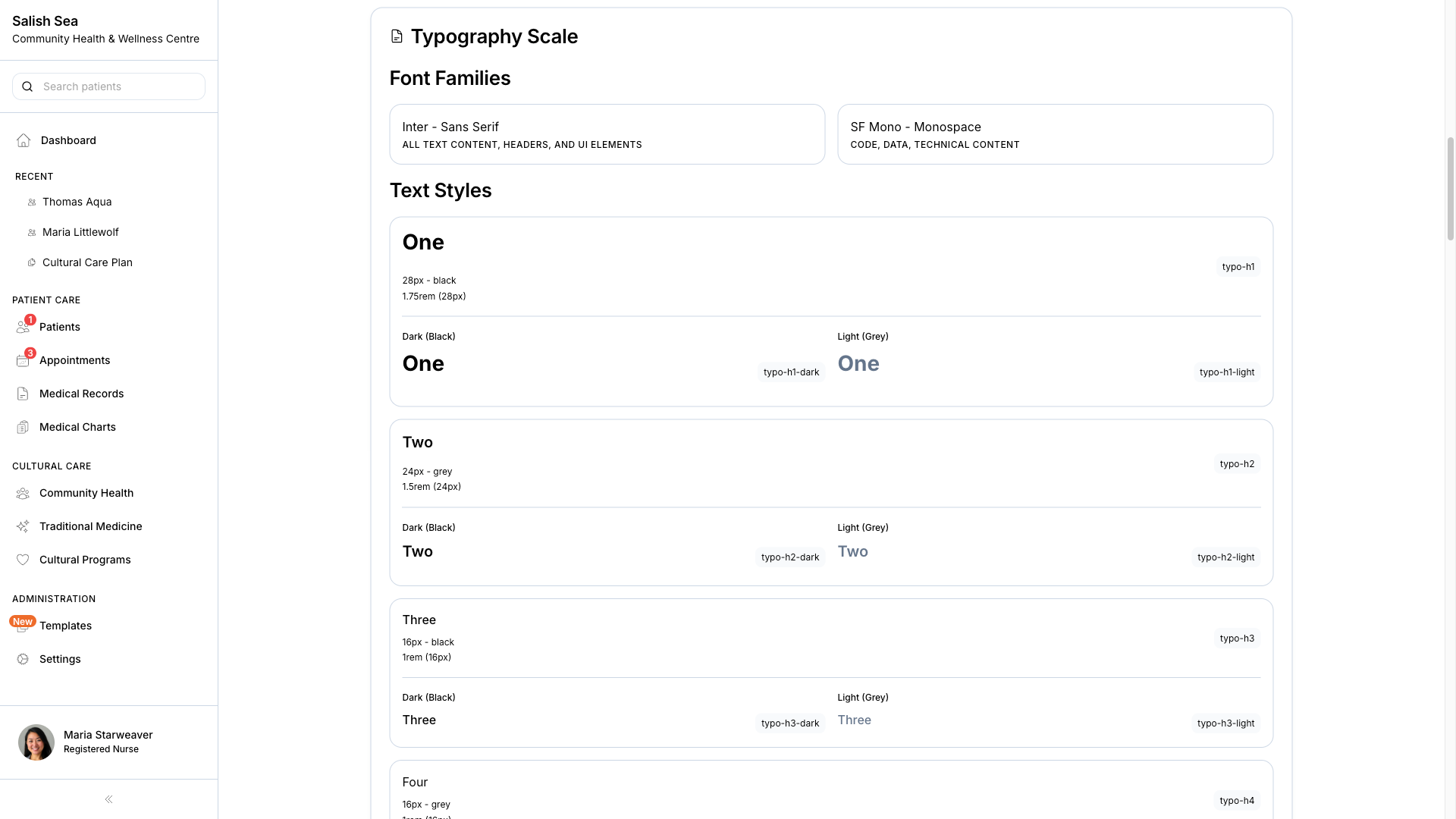cEMR
Designing a Community EMR for Integrated and Culturally-Safe Care
Overview
Over two years, I led the product design of a comprehensive community Electronic Medical Record (EMR) system for an Indigenous software solutions company. The goal was to transform the way healthcare providers deliver integrated, culturally safe, and community-centred care, with a particular focus on Indigenous communities.
Problem
Most EMR systems are designed for urban clinical environments and fail to reflect the holistic needs of community health providers. This project aimed to build a system that would:
Respect Indigenous approaches to healing
Support interdisciplinary teams and varied roles
Integrate medical and traditional health practices
Enable real-time collaboration across multiple agencies
My Role
Title: Product Designer
Duration: 28 months
Team: CEO, Business Director, Agile development team, QA, and clinical advisors
Responsibilities:
Led discovery and design strategy
Conducted stakeholder interviews and usability testing
Designed and iterated high-fidelity UI across all modules
Developed and maintained the design system
Facilitated presentations and feedback sessions with stakeholders
Process
1. Discovery & Research
I partnered with leadership to guide discovery through stakeholder interviews, journey mapping, and contextual inquiry. Our research revealed gaps in:
Communication and coordination between health teams
Support for traditional and cultural practices in care delivery
Respectful data practices and trauma-informed design
Key Activities:
Interviews with clinical staff, subject matter experts, and developers
Workflow mapping of community and clinical roles
Review of existing EMRs and interoperability challenges
2. Design Strategy
Based on research, I developed personas and experience maps to guide ideation. The core pillars of the design were:
Cultural Safety: Options to document traditional medicine and ceremony
Holistic View: Unified health summary including community programs, cultural practices, and medical care
Scalability: Modular platform adaptable to diverse community needs
3. Design & Co-Creation
Working within an Agile environment, I delivered design assets in sprints and continuously iterated based on team and stakeholder feedback.
Collaborative Deliverables:
Dashboard with tasks, alerts, and client insights
Client Profile with personal, cultural, and community information
Charting tools supporting clinical and traditional care plans
Programs & Services module for community-based health supports
Templates for various care contexts
Admin interfaces for governance and user management
4. Presentation & Validation
I led regular design reviews and feedback sessions with internal teams, including nurses, subject matter experts, and business management.
Incorporated real-time feedback into sprint cycles
Maintained documentation of design rationale and decision logs
Advocated for cultural validation processes involving community advisors
5. Design System
To ensure consistency and maintainability, I developed a custom design system that included:
Accessible colour palette
Grid-based layout system
Components tailored to clinical use (form-heavy, legible, mobile-friendly)
Scalable typographic hierarchy
Outcomes
Supported a successful pilot launch across multiple communities
Reduced time spent on administrative tasks via contextual, user-friendly charting tools
Increased user satisfaction, especially among Indigenous care workers and service coordinators
Reflection
This was one of the most meaningful and complex projects of my career. It required deep UX expertise alongside cultural empathy, systems thinking, and healthcare ethics. I'm proud to have helped design a product that supports whole-person care while honoring both clinical and traditional knowledge.
Tools & Skills
Tools: Figma, Axure, Jira, Claude
Skills: UX Research, UI Design, Interaction Design, Design System, Agile Collaboration, Healthcare Design









